In an age where technology shapes our lives in myriad ways, traditional crafts find a new home within the realms of Virtual Reality (VR) and Augmented Reality (AR). These technologies, once the province of high-tech industries and gaming, are now breathing new life into the ancient arts, offering immersive experiences that bridge generations and geographies. Let’s dive into how VR and AR are revolutionizing the way we interact with and appreciate traditional crafts.
Immersive Experiences with VR and AR
The digital revolution has not only transformed how we communicate and work but has also opened up new frontiers for cultural preservation and engagement. Virtual Reality (VR) and Augmented Reality (AR) stand at the forefront of this transformation, offering immersive experiences that bring the tactile and intricate world of traditional crafts into the digital realm.
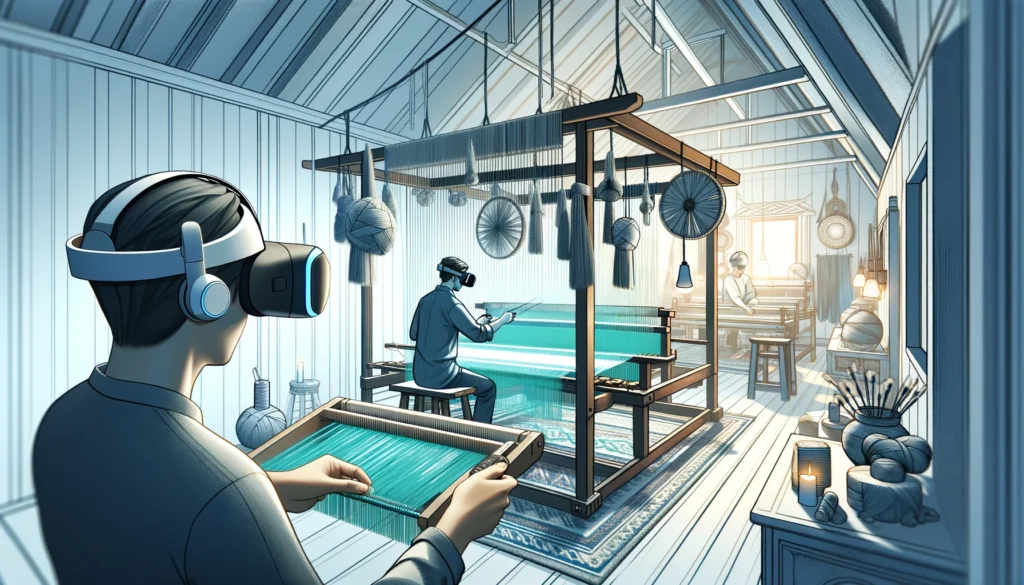
Exploring Craftsmanship Through Virtual Reality
VR technology transports users into a three-dimensional world where they can interact with environments and objects in real time. For traditional crafts, this means offering an unparalleled depth of learning and interaction:
- Hands-on Learning: Through VR, learners can virtually sit beside master artisans, observing their techniques and even practicing alongside them in a virtual space. This hands-on approach facilitates a deeper understanding of the craft beyond what books or videos can offer.
- Cultural Immersion: VR experiences can immerse users in the cultural context of the crafts, providing background stories, historical significance, and the cultural rituals surrounding the craft’s creation. This holistic approach enriches the learning experience, fostering a greater appreciation for the craft and its cultural roots.
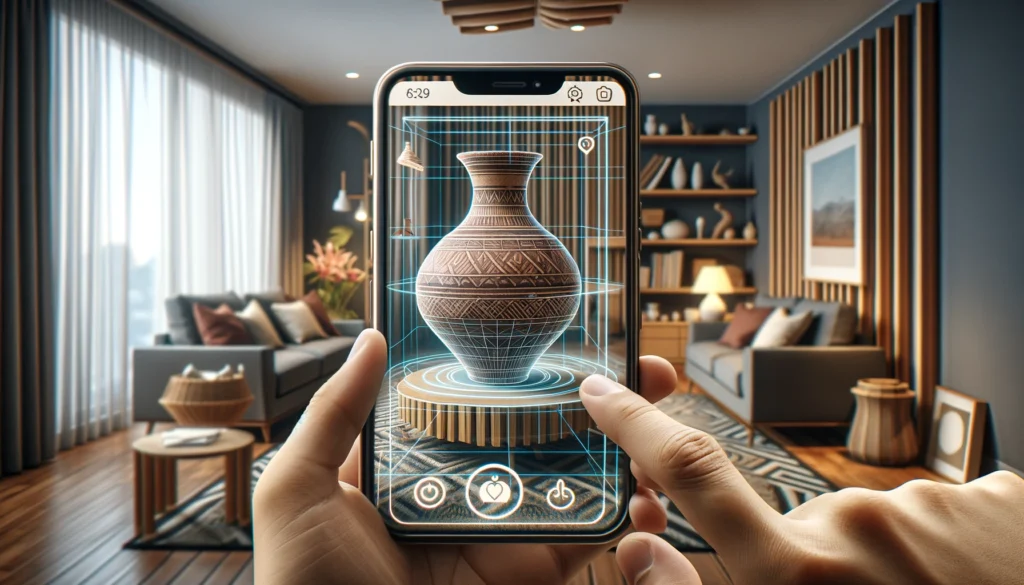
Augmenting Reality with Crafted Traditions
AR technology blends digital information with the physical world, enhancing our real-world environment with virtual details:
- Interactive Exhibits: Museums and exhibitions use AR to bring static displays to life. Visitors can point their smartphones or tablets at a craft piece to see additional information, videos, or animations that reveal the story and techniques behind it.
- Virtual Try-Ons: For crafts like jewelry, clothing, or decorative items, AR allows customers to see how these items would look in their own homes or on themselves. This interactive shopping experience can significantly enhance customer engagement and satisfaction.
The Future of Craft in Virtual Spaces
As we look towards the future, the intersection of VR, AR, and traditional crafts promises a world where cultural heritage is not only preserved but thrives in the digital landscape. These technologies offer more than just innovative ways to experience and learn about traditional crafts; they are a means to ensure these practices are carried forward to future generations.
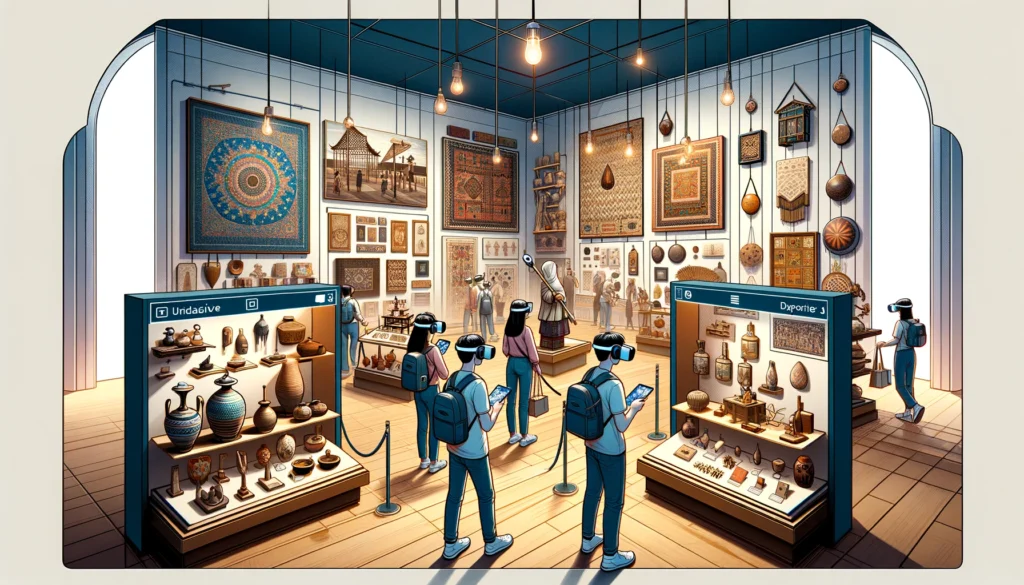
Bridging Generations and Geographies
The global reach of VR and AR technologies means that traditional crafts can be appreciated and learned by people across the world, regardless of geographical limitations. This global classroom not only educates but also inspires new generations of artisans and craft enthusiasts, ensuring the continuity and evolution of traditional crafts.
Enhancing Accessibility and Inclusivity
VR and AR can make learning about traditional crafts more accessible to individuals with disabilities, providing immersive experiences that might not be possible in physical settings. This inclusivity enriches the craft community, inviting a broader audience to participate in and support traditional craftsmanship.
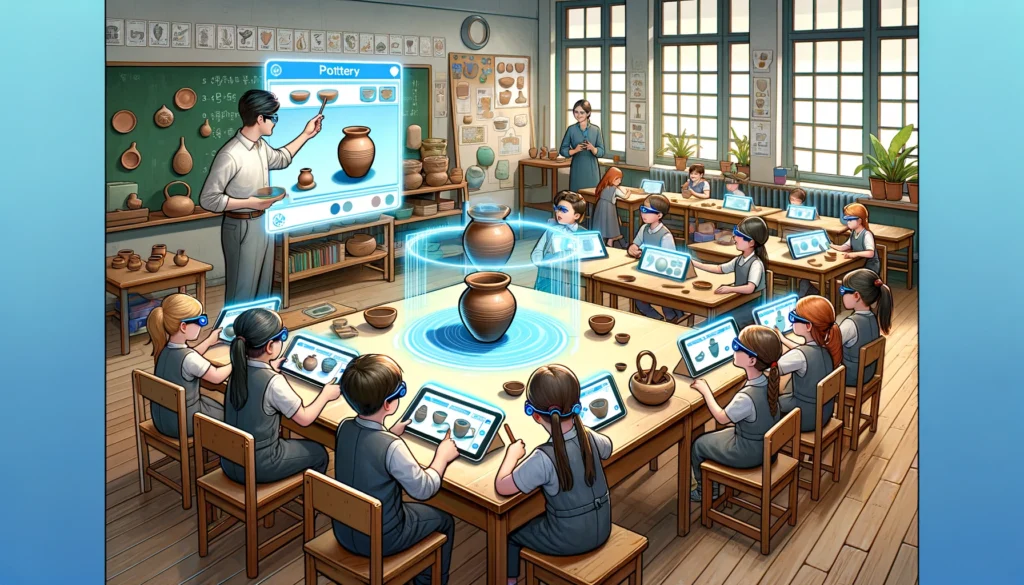
Sustainable and Ethical Preservation
Digital preservation through VR and AR offers a sustainable approach to maintaining and sharing traditional crafts. By reducing the need for physical materials and travel, these technologies present an environmentally friendly option for preserving and experiencing cultural heritage. Moreover, they ensure that the representation of cultural crafts is respectful and accurate, fostering an ethical approach to cultural preservation.
As we continue to explore the potential of VR and AR in the realm of traditional crafts, we stand on the brink of a new era where technology not only preserves the past but also paves the way for future innovation. This digital renaissance of traditional craftsmanship promises a future where culture, art, and technology merge, creating a richer, more connected world.
Author’s Note
This exploration into the virtual realms of traditional crafts highlights the exciting possibilities at the intersection of technology and heritage. As we continue this series, we celebrate the innovative ways in which VR and AR technologies are being used to preserve, educate, and inspire. Let’s embrace these digital advancements as vital tools in keeping the age-old traditions of craftsmanship alive and relevant in our modern world.
G.C., Ecosociosphere contributor.
References and Further Reading
- “Digital Preservation of Traditional Crafts” – An in-depth look at how VR technology is being used to preserve and promote traditional crafts.
- “Innovating Art with Augmented Reality” – Explores the potential of AR in enhancing the visibility and appreciation of traditional crafts.
As we navigate the digital age, the fusion of traditional crafts with VR and AR technologies offers a hopeful vision of the future—one where technology serves as a bridge to our past, enriching our understanding and appreciation of the world’s rich cultural heritage.

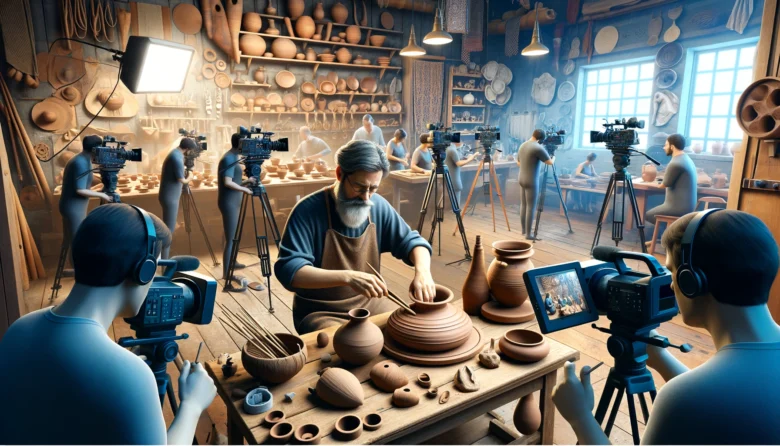



Comments
Can you be more specific about the content of your article? After reading it, I still have some doubts. Hope you can help me. https://www.binance.com/fr-AF/register?ref=JHQQKNKN
Your point of view caught my eye and was very interesting. Thanks. I have a question for you.